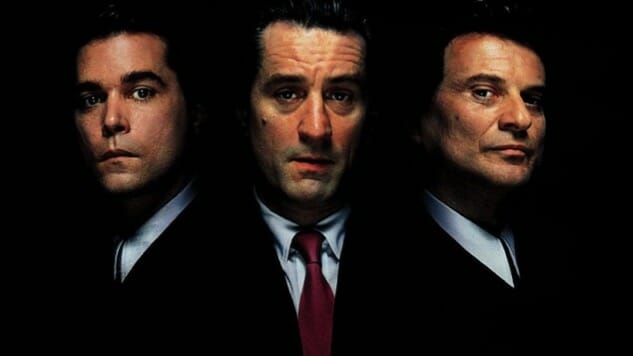
Put simply, a good actor is someone who is convincing—someone who viewers believe is actually experiencing a film’s events. So perhaps that’s why so many actors known for playing gangsters onscreen turned out to be shady characters offscreen, as well. Any film buff worth their salt loves a good mob movie, but these actors love mob movies so much that they’ve (allegedly) lived them. So if a mysterious accident should befall yours truly after this list hits the web, consider the following 10 goodfellas and their unsavory associates your primary suspects. Until then, I’ll be looking over both shoulders, investing in a bulletproof vest, and avoiding Italian restaurants, nightclubs and, for good measure, rowboats. Salud!
1. Lenny Montana, The Godfather (1972)
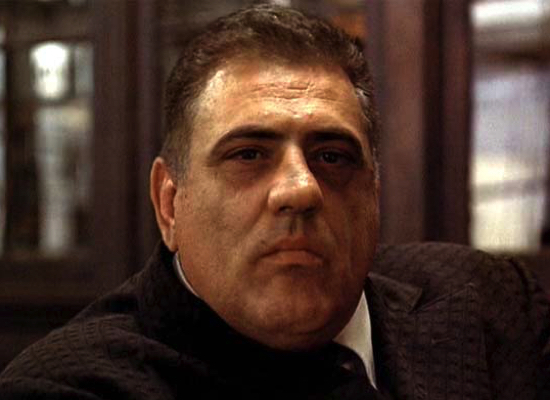
Lenny Montana is something of a one-hit wonder as an actor, known best (or perhaps only) for his role in Francis Ford Coppola’s gangster classic. Yet it turns out that as the fiercely loyal but—four-decade-old spoiler alert—doomed mob enforcer Luca Brasi, Montana was all but playing himself. The six-foot-six, 300-plus-pound actor and former world-wrestling champion busied himself as muscle for New York City’s Colombo crime family in the ’70s. In fact, it was in Montana’s capacity as a bodyguard for one of the family’s young dons that he found himself on The Godfather set, where Coppola “fell in love” with the not-so-gentle giant and quickly cast him as Brasi. The director famously once asked Montana if he knew how to spin the cylinder of a revolver, to which the enforcer-turned-actor responded, “You kiddin’?”
“[Montana] used to tell us all these things, like, he was an arsonist,” associate producer Gray Frederickson told Vanity Fair. “He’d tie tampons on the tail of a mouse, dip it in kerosene, light it, and let the mouse run through a building. Or he’d put a candle in front of a cuckoo clock, and when the cuckoo would pop out, the candle would fall over and start a fire.” Bettye McCartt, assistant to producer Al Ruddy, had her own mobster moment with Montana: when she broke her watch, he noticed and asked her what kind of replacement she wanted. “I’d like an antique watch with diamonds on it, but I’ll get another $15 one,” McCartt joked. A week later, Montana gifted her an antique diamond wristwatch, placing it on her desk wrapped up in a Kleenex. “The boys sent you this,” he told her. “But don’t wear it in Florida.”
2. James Caan, The Godfather, The Godfather: Part II (1974)
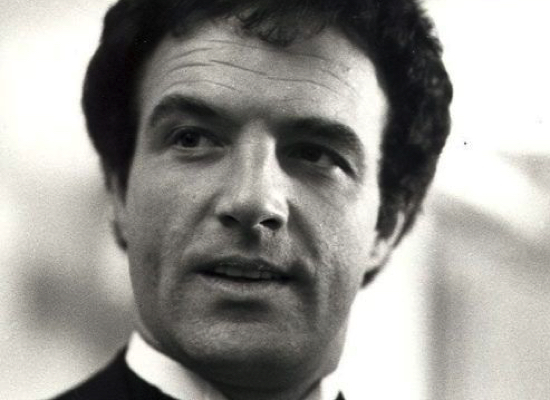
Another famed The Godfather alum, James Caan is known for his role as the hot-headed and ill-fated Sonny Corleone, the proud owner of arguably the most iconic death scene in gangster film history. Even Sonny’s pop had to admit that “Santino was a bad Don, rest in peace.” But according to The Week, Caan himself turned out to be, if not a good don, then a good friend to one: in 2011, the actor offered to stand bail for Andrew “Andy Mush” Russo, a powerful member of the Colombo crime family, after the mobster was picked up by the FBI. Despite Caan’s offer “to put up anything of personal value that the court would accept for bail” or even “fly in and be present if the court should so request,” the presiding magistrate denied Russo’s bail, branding him “a danger to the community” after hearing the underworld figure referred to as a “representante” (or “boss”) in secret recordings.
Andy Mush was not the only member of the Colombo family whom Caan was close to—the actor also once wrote to Brooklyn’s District Attorney to thank him for investigating a corrupt FBI agent who had jailed Joseph “Jo-Jo” Russo, Andy Mush’s son. “Joseph Russo is a dear friend of mine, and I cannot express enough how pleased I am that your office has taken interest and is in pursuit of correcting this problem,” Caan wrote. Caan’s relationship with the Russos—made especially significant by the fact that Andy Mush is the godfather to Caan’s son, Scott—earned him quite a reputation in New York City. “I won Italian of the Year twice in New York, and I’m not Italian,” Caan, who is of Jewish descent, once said. “I was denied in a country club once. Oh, yeah, the guy sat in front of the board, and he says, ‘No, no, he’s a wiseguy, been downtown. He’s a made guy.’”
3. Anthony “Tony” Borgese, Goodfellas (1990), The Sopranos (1999)
As you see, Tony Borgese (stage name: Tony Darrow) has appeared in two of mob drama’s crowning achievements. The actor was born and raised in Brooklyn, the son of a connected “street guy,” and gravitated towards show business at a young age, getting an early break as an aspiring nightclub singer through a connection of his own. Borgese was a friend of Paul “Little Paulie” Vario Jr.—Little Paulie’s father, prominent mobster Paul Vario Sr., got Borgese a gig at the Bamboo Lounge, a well-known hot spot for local wiseguys. Art imitated life years later when Borgese was cast as Sonny Bunz, that very same nightclub’s put-upon, absurdly named owner, in Martin Scorsese’s mob classic Goodfellas. (Paul Sorvino’s character in the film, Paul Cicero, was based on Vario Sr.) Borgese also played crime family captain Lorenzo “Larry Boy” Barese in 14 episodes of HBO’s The Sopranos, a role not quite as true to his life, though not by much. “I knew John Gotti—I knew all those guys from the neighborhood,” Borgese once told the New York Post. “They always treated me well.”
Unfortunately, the long arm of the law did not treat Borgese quite so well. In 2011, the actor faced a multi-year jail sentence after pleading guilty to extortion—Borgese had a hand in a debt collection turned savage assault, perpetrated by heavies from the Gambino family. “I used extortionate means to collect a debt from a person,” Borgese admitted in Brooklyn Federal Court. The unidentified victim, whose jaw and ribs were broken in the beating, allegedly owed money to a car dealership in upstate New York—the dealer reportedly asked Borgese to help him collect the debt. Borgese then turned around and mentioned the debt to a wiseguy friend of his during a round of golf. “I asked him for a favor,” he later explained. A Gambino goon would implicate Borgese in a recording obtained by the FBI: “So Tony meets them. Shows them where the house is. They go to the house, the guy answers the door, they beat the living shit out of him.” Per The Daily Mail:, Borgese, in true gangster fashion, “showed no emotion and refused to comment as he left the courtroom putting on a pair of mirrored sunglasses.”
4. Jerry Orbach, The Gang That Couldn’t Shoot Straight (1971)
Jerry Orbach, who passed away in 2004, is famous for having played Detective Lennie Briscoe on Law & Order for more than a decade. But regardless of his having portrayed a lawman for most of his career, Orbach makes his way onto this list by virtue of one simple, astounding fact: the actor once infamously upheld the time-honored Mafioso practice of omertà, quite literally taking a mob assassin’s lethal secret to his grave. Orbach was an eyewitness to the 1972 murder of Joseph “Crazy Joe” Gallo, a New York City mob boss and personal friend of his. Their association began when Orbach played a character based on Gallo in 1971’s The Gang That Couldn’t Shoot Straight. Members of Gallo’s crew were rumored to have sought revenge against the film’s writers, while Crazy Joe himself, back on the New York City streets after a decade-long prison term, was so furious that he demanded to meet the man who had portrayed him on the big screen—a local cop reportedly helped to set up the sit-down. But instead of coming to blows or bullets, Gallo and Orbach, who was a big name on Broadway at the time, became fast friends.
Legend has it Orbach was eating dinner with Crazy Joe when he was gunned down—the mob boss, killed on his 43rd birthday, Apr. 7, 1972, was a high-ranking member of the Profaci family, who were then at war with the Colombos. Orbach and his wife were reported to have joined Gallo at the Copacabana, where they took in a Don Rickles midnight show and “had a marvelous time.”
Although the Orbachs later contended they went home after the show, it’s believed they actually joined Gallo at Umberto’s Clam House in Little Italy, where Crazy Joe was whacked by a group of Colombo triggermen in the wee hours of the morning. Despite his friendship with Gallo, Orbach refused to cooperate with investigators—homicide detective Joseph Coffey has insisted he was unable to close the Gallo case because of Orbach’s refusal to name the shooters. “You’d think he would have wanted to help us solve it,” Coffey told tabloid The National Enquirer. “However, when I brought him in for questioning Orbach dummied up.” Despite his penchant for roles on the right side of the law, it turns out Jerry Orbach was a standup guy, keeping quiet about the hit until he, too, breathed his last.
5. Robert De Niro, The Godfather: Part II, Goodfellas, A Bronx Tale (1993), Analyze This (1999)
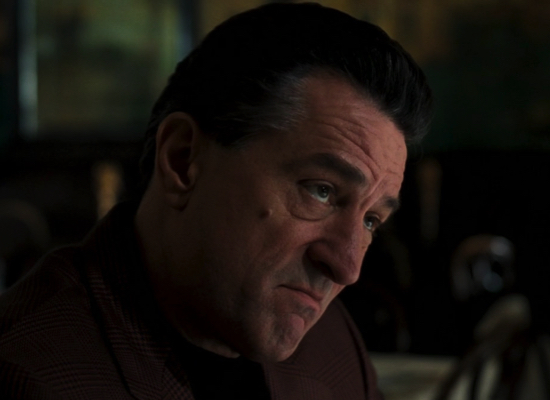
We kid you not—even a movie star as massive as Robert De Niro, who handily transcends the mob drama category, has been unafraid to rub elbows with true-blue wiseguys. De Niro worked closely with late Gambino family heavy Anthony “Fat Andy” Ruggiano in preparation for his role in—of all films—Harold Ramis’ screwball comedy Analyze This. Apparently De Niro, who is well-known for his intense approach to role research, felt he needed to first sit down with a murderous mobster before he could properly portray neurotic, fictitious gangster Paul Vitti. Ruggiano’s reputation as a gangland killer is well-documented, mostly thanks to his own son: Anthony Jr. turned on his father during the trial of a Gambino hitman, testifying that Fat Andy “did a lot of work for the family.” “He killed somebody with a fellow named Joe,” Anthony Jr. explained, per the NY Daily News. “He killed a florist in Brooklyn. He killed three people in a warehouse that was robbing crap games. He killed somebody with me … and they had this guy Irish Danny killed behind the Skyway Motel on Conduit Boulevard.” For those of you keeping score at home, that’s seven murders Ruggiano, who died in 1999, was allegedly involved in—he’s also infamous for having OK’d the killing of his own son-in-law.
Though De Niro’s association with a tough customer like Ruggiano is easily explained away as an exceptional actor’s innocent (if overzealous) due diligence, the secrecy surrounding their now-infamous meeting is not. De Niro and Ruggiano were introduced by actor Anthony Corozzo, who was an uncredited extra on Analyze This and a bit player in A Bronx Tale, De Niro’s directorial debut. Corozzo also happens to be an alleged Gambino associate whose brothers are Nicholas “Little Nick” Corozzo, a high-ranking capo, and Joseph Corozzo, a consigliere of much repute. Corozzo himself has a notable reputation: “Anthony is like a liaison with the acting community,” a knowledgeable source told the NY Daily News. However, his nephew, attorney Joseph Corozzo Jr., denied that Corozzo brought Ruggiano to the Analyze This set, while De Niro claimed—through spokesperson Stan Rosenfeld—that the movie was made so long ago, he didn’t recall meeting with Ruggiano at all. “Bob seldom, if ever, discusses his research techniques,” said Rosenfeld. All we’re left with is the mystery, and of course the legendary De Niro’s mile-long mob filmography.
6. Michael Squicciarini, The Sopranos

Only the most studious Sopranos viewers will recognize Michael “Big Mike” Squicciarini, who briefly played low-level enforcer “Big Frank” Cippolina in the show’s second season. The 6-foot-5, 305-pound actor, who died of natural causes in 2001, was determined to hit it big on the HBO mob drama: “Just give me one year on that show—give me nine or 10 episodes—and I’ll be a household name,” Squicciarini, also known as “Scuch,” told the New York Observer. But Scuch, a former debt collector for the DeCavalcante family—the New Jersey mob crew upon which The Sopranos’ DiMeo family is loosely based—who had spent years in prison behind multiple aggravated assault charges, also had a back-up plan, one that would prove deadly. “Let me put it this way,” Squicciarini told the Observer. “If the movie business doesn’t work out, I always got something to fall back on. I got my mask and gun at home.” True to his word, Squicciarini never quite put his mobster past behind him.
In 2002, the actor was posthumously implicated in a cold-blooded gangland execution that had taken place 10 years prior. According to documents filed by Manhattan District Attorney John Hillebrecht (via The Guardian), Squicciarini and others lured a rival drug dealer named Ralph Hernandez into a Brooklyn nightclub owned by DeCavalcante capo Joseph “Joe Pitts” Conigliaro. Conigliaro, who was wheelchair-bound due to a paralyzing wound sustained in a prior shootout, pulled a piece on Hernandez and shot him in the forehead. The capo was then wheeled over to the dying drug dealer, whom he shot thrice more in the head. Conigliaro’s henchmen rolled Hernandez’s body up in a carpet, dumped it in an abandoned lot nearby and returned to clean the blood-stained nightclub floor. One of these men was likely Squicciarini, though his exact role in the killing is uncertain. Scuch was linked to the crime by sources who knew his nickname, and was ultimately implicated by witnesses who, in an absurd twist of fate, recognized him in a Sopranos clips shown to them by investigators. Bada bing!
7. Alex Rocco, The Godfather

The Godfather was Alex Rocco’s big break, and as bespectacled Las Vegas big shot Moe Greene, he made his relatively small role count. Lines like “I made my bones when you were going out with cheerleaders!” made Moe a memorable character in a film full of them. Rocco’s character’s unforgettable death during the film’s climactic christening montage even spawned a gangster film trope all its own: the “Moe Greene Special.” And though the recently deceased Rocco, born Alexander F. Petricone Jr., could not have claimed the criminal underworld clout of, say, a Benjamin “Bugsy” Siegel, upon whom Moe Greene is said to have been based, he did make a few mobster bones of his own. The Cambridge, Mass., native had a history with Boston’s notorious Winter Hill Gang, the predominantly Irish-American organized crime confederation that lists such infamous gangsters as James “Whitey” Bulger (portrayed by Johnny Depp in Scott Cooper’s Black Mass) among its members.
In 1961, a young Rocco was arrested in connection to the murder of Bernard “Bernie” McLaughlin, a formidable Irish gang leader from Boston’s Charlestown neighborhood. A witness told authorities that Winter Hill Gang boss James “Buddy” McLean shot McLaughlin down in broad daylight while Rocco acted as the getaway driver. Both men were arrested on suspicion of murder, but a grand jury would decline to indict them. Four years later, McLean was murdered, a casualty of the Winter Hill Gang’s ongoing war with McLaughlin’s gang. Meanwhile, while Rocco was serving jail time for his part in a brawl in a Somerville diner, his wife borrowed new Winter Hill Gang leader Howard T. Winter’s car, somehow escaping injury when a bomb planted in the vehicle exploded. Rocco and his wife divorced, and he left Boston—and his life of crime—behind. “I had to get out of the Boston area, so I flipped a coin and said, ‘Heads Miami, tails California,’” Rocco told the Boston Globe. “I was in my mid-20s and came out here with no training. Acting wasn’t even in my mind.”
8. George Raft, Scarface (1932), Each Dawn I Die (1939)
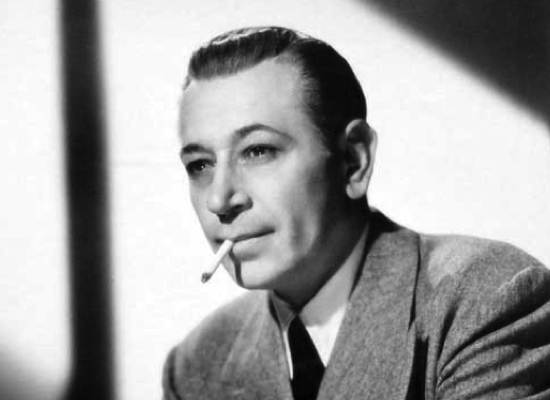
What we’re going to do right now is go back … way back, to a time when Scarface was in Chi-Town black and white, not South Beach neon. During that faraway era, George Raft was the gangster actor, a mob-movie icon—you know the guy: chewing on a toothpick, flipping a nickel, etc. And as a childhood friend of legendary New York City Irish mobster Owney Madden, Raft brought plenty of authenticity to the archetypical character he created. Before he was an influential actor, Raft was actually Madden’s personal driver, and, oddly enough, a talented dancer—“George did the fastest and most exciting Charleston I ever saw,” Fred Astaire once said. It was just before leaving to go on tour with a traveling show run by Madden that Raft decided to audition for a role in Howard Hawks’ Scarface, which was loosely based on the exploits of crime kingpin Al Capone. Hawks took a liking to Raft’s “unique look” and cast him as Guino Rinaldo, Antonio Camonte’s best friend—the character was based on Capone’s personal bodyguard, Frank Rio. Raft lit up the screen as Rinaldo, the suave yet lethal, coin-flipping triggerman. Scarface was Raft’s first hit, but during the illustrious film career that followed, the actor was never able to escape his shady reputation.
It certainly didn’t help his notoriety that Raft rubbed elbows with a veritable who’s-who of made men over the years, including a pair of organized crime titans in Bugsy Siegel and Meyer Lansky. But remarkably, Raft’s mob connections once saved fellow gangster-film legend James Cagney’s life. In his autobiography Cagney on Cagney, the actor claimed his life was threatened by the mob while he was president of the Screen Actors Guild. Per TCM, Raft intervened with his gangster associates on Cagney’s behalf, and was able to have the hit called off. It’s said that Raft also did the same for Gary Cooper after the Western star’s romantic dalliances earned him a spot on a mobster’s hit list. Raft’s fame magnified his influence, making him an idol of many of the era’s actual gangsters. But for his part, Raft did his damnedest to distance himself from the mob in the public eye, insisting that his gangland pals were merely acquaintances. “I’ve never been locked up, I’ve never taken a drink, I never hurt anybody, and I gave all my money away,” Raft said. “So how come I got this bum reputation?” Ill-reputed or no, Raft managed to dodge a life of crime while helping to establish the gangster film as a Hollywood mainstay that endures to this day.
9. Gianni Russo, The Godfather
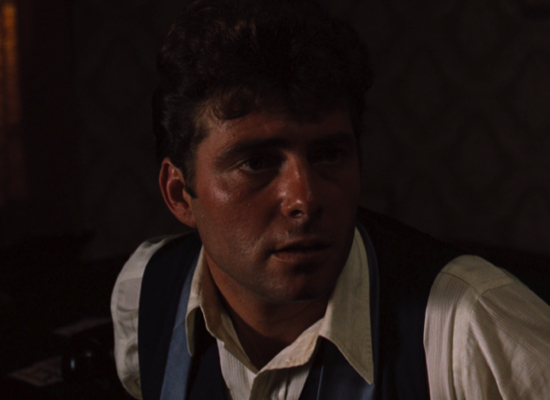
This record is broken: Gianni Russo, who got his start with a key role in The Godfather, was all kinds of mobbed-up off-camera. It’s safe to say the previously unknown Russo would never have been picked to portray Carlo Rizzi, the gangster who betrays Sonny Corleone, without the help of his organized crime connections. Legend has it that the many unknown actors who hoped to join the Godfather cast opted to boast about their mobster bona fides, rather than highlight their everyday professional credentials, and it was this approach that brought Russo to the attention of the film’s producers. The actor commissioned a camera crew to shoot his own audition tape, in which he acted out the roles of Michael, Sonny and Carlo. “So Bettye McCartt, Al Ruddy’s assistant, tells me that Ruddy loves exotic cars and Oriental women,” Russo later recounted to Vanity Fair. Acting on that tip, he enlisted an Asian showgirl to drive his Bentley from Las Vegas to Los Angeles and place his audition video in Ruddy’s hands personally. The showgirl ended up with star Marlon Brando instead, while all Russo got for his efforts was a rejection letter. But Russo got his opportunity when producers were unable to gain access to a Staten Island set they wanted to use as Don Corleone’s home. According to associate producer Gray Frederickson, Russo “talked to a few people, and suddenly the compound was available.” Russo, who was then cast as Carlo, later claimed that Joe Colombo himself had insisted the actor be rewarded with a prominent role.
Russo has no shortage of such claims, and if even half of what he says is true, the man has a personal history deserving of a gangster film all its own. The Gianni Russo story begins with St. Anthony, for whom he lights five candles each day in thanks for having survived polio as a child. The disease left Russo with what he calls “a gimp arm,” leading him to sell ballpoint pens outside a Fifth Avenue hotel. Each day, Genovese family mob boss Frank Costello would pass by, and Costello soon got into the habit of giving Russo a buck or two. One day the gangster gave Russo a cool hundred bucks instead, instructing him to meet him at the Waldorf-Astoria Hotel the next morning. “From that day on, I was with him every day,” Russo says. This is just one of the many near-mythical stories in Russo’s arsenal—the actor also claims that his great-grandfather, Angelo Russo, was a famous Sicilian mobster; that he has a close connection to such notorious organized crime figures as John Gotti and Carlo Gambino; that he has slept with more famous women than he can count, including Marilyn Monroe; that he has killed three men, including a member of the Medellín cartel who stabbed him with the shard of a broken Cristal bottle at the now-defunct Gianni Russo’s State Street casino in Las Vegas; that he has beaten 23 federal indictments and “never slept in a jail.” At any rate, Russo blurs the line between fact and fiction, just like so many classic mobster movies.
10. Tony Sirico, The Godfather: Part II, Goodfellas, The Sopranos
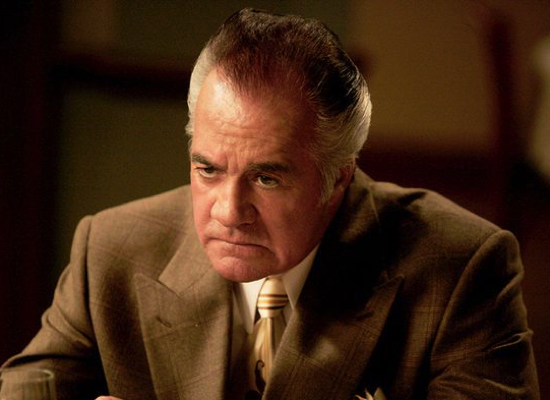
Tony Sirico first tasted the big time with small roles in a pair of gangster classics before rocketing to fame as The Sopranos fan favorite Paul “Paulie Walnuts” Gualtieri. Stop me if you’ve heard this one: it’s difficult to tell the factual man from the fictional one, as Sirico’s rap sheet is nearly as extensive as his IMDb page. But judging by a 1990 LA Times profile, Sirico, born and raised in Bensonhurst, Brooklyn, was very much a product of his environment. “Where I grew up, every guy was trying to prove himself. You either had to have a tattoo or a bullet hole. I had both,” a grinning Sirico told the Times. Before becoming an actor, he was arrested 28 times, first for stealing nickels from a newsstand at the tender age of seven. Sirico went on to become a notorious stick-up artist, getting pinched time and time again, and serving two prison terms on weapons and armed robbery charges. But all of those run-ins with the law were essentially just auditions, to hear him tell it: “I got 28 arrests and only two convictions, so you gotta admit I have a pretty good acting record,” Sirico boasts. It was during his second stretch inside, while watching a group of ex-con performers, that he decided to give acting a shot: “I watched ’em and I thought, ‘I can do that.’”
It was Sirico’s extensive finger-on-trigger experience that ultimately made him a success as a silver screen gangster. During his armed robbery days, Sirico was a fast-rising associate of the Colombo family, serving under notorious boss Carmine “Junior” Persico, per Cosa Nostra News. (Incidentally, Sirico’s wiseguy nickname was also Junior.) The Sopranos even makes reference to Sirico’s pinstriped past—in “The Blue Comet,” the series’ penultimate episode, Paulie Walnuts recalls, “I lived through the seventies by the skin of my nuts when the Colombos were goin’ at it.” And it’s rumored that Sirico agreed to play Paulie only with the assurance that his character would never become an informant. “Listen, Junior was a genuine tough guy,” says James Caan, a long-standing acquaintance of Sirico’s who ran in some of the same organized-crime circles. “But in a funny way, now that he’s straight, he can behave like a wiseguy. He’s been able to romanticize his past, throw in a few bangles and sparkles and use it as an actor. What you see is really him—he just adds a little pepper, a little cayenne, to spice it up.” Fellow Colombo associate Caan’s words ring true: Paulie Walnuts is nothing if not a fiery, unforgettable, authentic character. “I feel good about what I’ve accomplished,” Sirico says. “I came from another world—and now I’m an actor.”
Scott Russell lives in Atlanta and studies writing at the Savannah College of Art & Design. You can follow him on Twitter and his website.